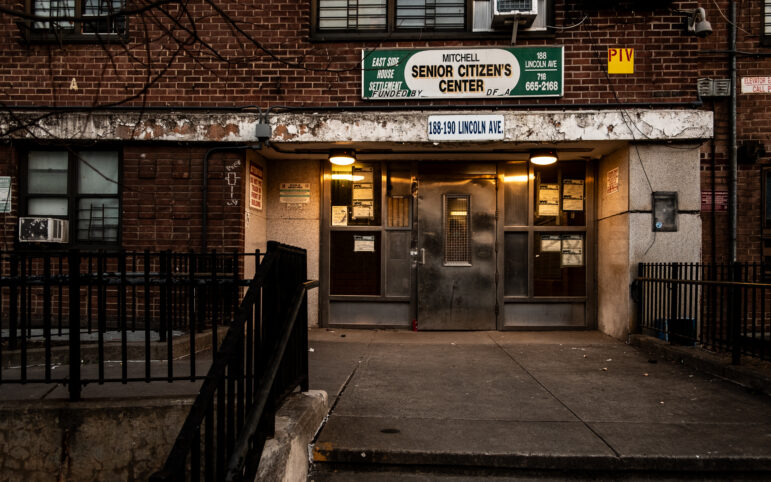After two men residing at the Fort Washington Men’s Shelter were arrested for two separate murders late last summer, the local community board began asking itself what place the institution had in the neighborhood – and moving toward a possible ouster of the shelter from Washington Heights.
Located on 168th Street between Fort Washington Avenue and Broadway in a four-story Armory building in a predominantly residential area near the Columbia University Medical Center, the shelter is unlike most throughout the city, as it only houses men with mental illnesses. It formerly housed upwards of 1,000 homeless people during the 1980s, but was downsized in the mid-’90s to create a 200-person facility housing homeless men found to be mentally ill by the Department of Homeless Services (DHS).
Last year’s attacks prompted Community Board 12’s housing and human services committee to bring a resolution to the whole board last autumn to shut down the men’s shelter – whose operation DHS contracts out to the nonprofit Project Renewal – and move the residents elsewhere in the shelter system. Action on the resolution was tabled for further review, and CB12 has since been studying issues of homeless rights, mental health and the shelter’s impact on the surrounding neighborhood.
On Thursday the board held a hearing, attended by representatives from city agencies and shelters along with a handful of neighborhood residents, intended to solicit multiple perspectives before going forward with a revised resolution. “We recognize that their well-being, their care, is ultimately reflected [in] the care, the safety, and the quality of life [of] the rest of the community,” said Julio Rodriguez, chair of the Housing and Human Services committee.
Etta Graham, who has served as director of the shelter for nearly 10 years, told the committee that shelter managers have always responded to issues regarding its population appropriately, calling the police when necessary. Following last year’s murders, Project Renewal upped Fort Washington’s security staff from 24 to 30. Though its clients are still free to leave the shelter until curfew at 10 p.m., according to Graham, the security staff patrols the surrounding neighborhood to make sure the men do not pose a problem to the neighborhood at large.
“Whatever complaints I get from the community, they are addressed immediately,” Graham said.
NYPD statistics suggest that the shelter accounts for a portion of the police action in the precinct, which is home to about 260,000 people. According to Capt. Joseph Dowling, commanding officer of the 33rd Precinct, in 2006 there were 5,900 total arrests in the precinct, of which 87 or 1.1 percent – including 11 felonies – were attributable to men living at the shelter. He also said that 7 percent of all criminal court summonses in the precinct were given to these men and that five out of the 91 registered sex offenders in the precinct reside in the building. He was unable to give any comparisons with similar shelters in other precincts.
George Nashak, DHS acting deputy commissioner for adult services, told the board that the shelter is under constant supervision from the agency, with weekly on-site visits evaluating the shelter’s entire population, plus up to four physical site inspections and one comprehensive evaluation per year, adding that Project Renewal succeeded in maintaining its contract with the city for conducting its program in “an excellent manner.”
Some board members and residents at the hearing asked what assurances DHS and Project Renewal could provide the neighborhood that the shelter’s population would comply with the provisions of their stay, which include taking necessary medications and not committing violent acts. Graham said that the shelter cannot force its residents to take medications and only can issue warnings and offer additional support structures with few options to transfer problematic clients to other similar facilities, though Fort Washington is the only one of its kind serving solely mentally ill men. Graham added that there is no correlation between violence and mental illness, though she noted that many in her shelter are also substance abusers, which could contribute to the higher rate of crime.
Clients at the shelter are chosen by DHS, not Project Renewal, only after they are registered and evaluated at one of the city’s three assessment shelters. While DHS is slowly decreasing the number of beds available in shelters in favor of supporting permanent housing, Nashak said that DHS currently has no plans to shut down the Fort Washington facility.
The shelter has found some agreement from the community board and area residents alike about the basic rights of its clients. Following the attacks, the community board supported a contract to install air conditioning inside of the building, which is expected to keep the men inside, rather than on the streets cooling off. Al Kurland, former director of the Police Athletic League, a youth program which also uses the Armory for programming, said that aside from a few problems of people not being where they should be, there have been “very few problems with clients at the shelter.”
Asked what the board could provide Project Renewal and the shelter, Graham responded that people must remember that they are serving homeless people. “I want some level of empathy … We are here working with them and are doing a very good job, a very difficult job.”








